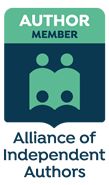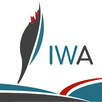|
When I finished the first draft of Sābanto, I knew that making the manuscript ready for publishing was not something I could do alone. I knew I needed help, and lots of it.
First it needed an English edit. I didn’t think any professional editor would look at a manuscript that didn’t make grammatical sense. While I was waiting for my friend to read and correct the manuscript, I wondered what the next logical step would be. I knew I needed beta readers, but after that I had no clue what else was required. I began to look for an editor. I didn’t think my story needed a developmental edit. It had a beginning, a middle, and a surprise ending, and I felt it was more or less complete, but in order to ensure I had a quality story, I needed an honest, independent opinion. This was where my editor came in and evaluated the manuscript. When the evaluation came back, I admit, my heart sank. It felt like I’d gotten a school exam back, one I was positive I’d aced, and instead found it all marked in red with everything I’d gotten wrong. Looking back at the edits and all the hard work that I put into improving the story, I do not regret getting an editor. I can’t imagine doing all this work without a professional walking me through the process. Below are what I have found to be the five main benefits of editing with a professional.
Yes, editing is expensive and it does take time, but the results are worth the money and effort. I’ve read countless books and stories that weren’t professionally edited, and it showed. These books stick out, and not in a good way.
0 Comments
With my manuscript nearly complete, this past fall I started to look around for cover designers. There are many out there and it can be really hard to decide who to hire. Here are some guidelines based on my experience. How to prepare Before you reach out to talk to any designers, prepare the following:
I wanted a minimalist, simple design for my book. There were two things that made me choose the designer I did for Sābanto. Ana is a Canadian entrepreneur from Vancouver with an illustrator available on site. When reviewing her previous work I was confident that the minimalist design I was looking for would be attainable. We discussed ideas and everything was set into motion. Feedback I’ve joined a lot of author communities during my journey through publishing, and once I started receiving the first drafts of the design, I decided to share it for some feedback. Here’s what I got:
I decided not to be a sheep when it came to cover design, and it could turn out to be a mistake on my part. I’m prepared to take the blame, but they always say that a writer needs to find their own voice and be unique, so as to stand out from the crowd. Why not treat cover design the same way? Whenever I go back to the feedback I received, it reminds me of an image I saw not too long ago. A bookstore was re-arranging books to increase sales, and they’d put all the books with covers featuring shirtless men on display. They called these “Where is my shirt?” books. It makes me wonder how the readers of these books know which ones they’ve already read, because they all look so similar. In a sea of dystopian fiction books with red and black covers, I hope my light-covered book will stand out. As the meme says: “In a world full of princesses, dare to be Batman!” In conclusion, a quick note to readers: don’t judge a book by its cover. Or, maybe do, and grab the one that stands out. |


 RSS Feed
RSS Feed



